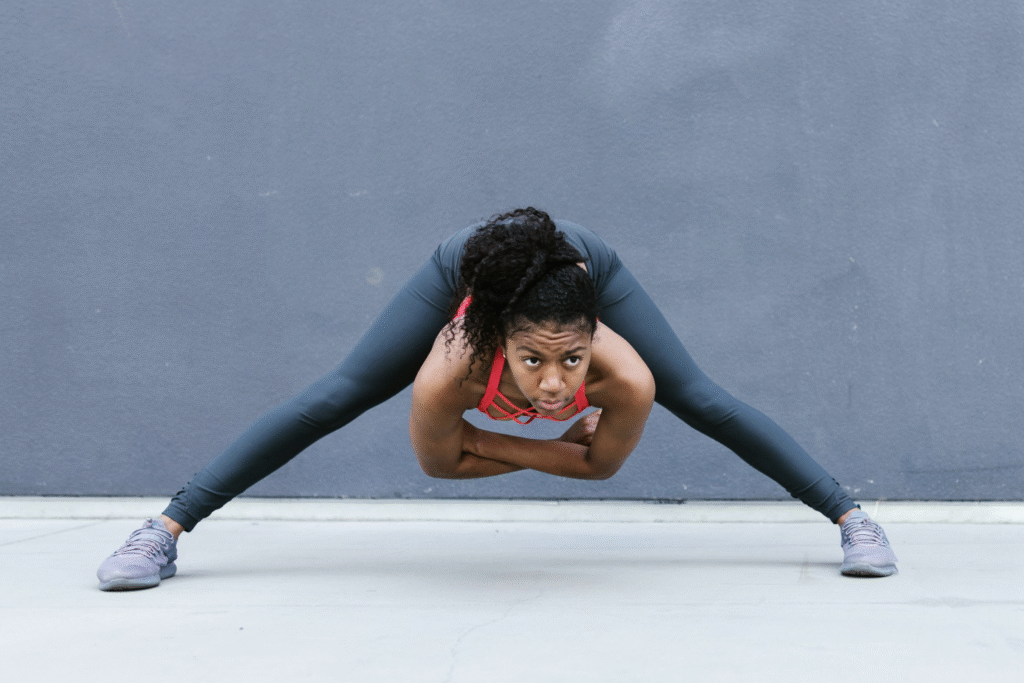
Let’s be honest, starting a new exercise routine can feel like hard work, especially if you’re not a fans of sport. Sometimes people aren’t keen on working out because they have gym anxiety, not enough time or simply find it lacks interest. But here’s the good news: you don’t need to love exercise to make it a part of your life. You don’t need much, just to stay positive and find effective strategies.
In this guide, we’ll teach you how to develop a workout habit, even if being fit isn’t your current priority. We’ll also teach you about habits from James Clear’s book, “Atomic Habits,” and the 21/90 rule which may help you stick to new habits.
Why Is Consistency So Hard in Fitness?
Before we jump into solutions, let’s talk about the real obstacles:
- Lack of motivation
- High expectations (thinking you need to work out an hour every day)
- Burnout from doing too much too soon
- Negative association with fitness due to past failures or societal pressure
Getting back on track is not easy for most, mainly because they want to do too many things at once. To make real progress, you have to build a good system, rather than just set a target.
Step 1: Start Ridiculously Small (Atomic Habits Style)
As the author of Atomic Habits, James Clear explains why small victories matter. His theory? You will achieve what you set out to do based on your systems, not the height of your goals.
Try this: Instead of creating a workout that lasts 30 minutes, focus on stretching, squatting or walking for just 2 minutes. That’s it.
That’s when your brain begins to look for it in your daily habits. You’ll naturally hope to keep your momentum going. Slowly, these changes will become very strong habits.
Step 2: Rewire Your Brain with the 21/90 Rule
The 21/90 rule suggests that it takes 21 days to form a habit and 90 days to make it a permanent lifestyle change.
Plan it like this:
- Days 1–21: Focus only on showing up. Even 5 minutes of movement counts.
- Days 22–90: Slowly increase your intensity, frequency, or duration.
- After 90 Days: It becomes second nature—like brushing your teeth.
Mark an achievement mark each day on a calendar or use an app to see if you successfully did your workout each day. That strong broadband will give you the drive to proceed.
Step 3: Choose Enjoyable Movements (Not Just “Workouts”)
If you don’t enjoy classic exercise, look at it differently. You don’t have to join a gym or exercise with burpees.
Here are enjoyable ways to move your body:
- Dance to your favorite playlist for 10 minutes
- Go for a nature walk or urban stroll
- Try beginner-friendly YouTube workouts like Yoga with Adriene
- Do bodyweight workouts while watching Netflix
- Try fitness games like Ring Fit Adventure or Just Dance
The goal is to make movement feel fun, not forced.
Step 4: Schedule It Like an Appointment
Do you miss your doctor appointments? Go about your exercise the way you would your work environment.
- Block out time in your Google Calendar or planner
- Set reminders and alarms
- Keep your workout clothes or mat visible as a physical cue
Your brain works best when you build regular routines. Taking your set of measures around the same period, for example after you drink your morning coffee or before you eat your dinner, will help the habit to stand out.
Step 5: Focus on Identity, Not Outcomes

Instead of saying “I want to lose 10 pounds,” say:“I’m becoming the kind of person who moves daily.”
Following your identity leads to better outcomes than setting goals for specific results. Pressure will be removed and you’ll naturally fit into your new role in life.
When you shift your internal narrative, your external behavior follows.
Step 6: Celebrate the Small Wins
Each time you complete your daily workout (no matter how short), celebrate it:
- Say “Yes! I did it.”
- Share it with a friend or accountability buddy
- Reward yourself with something healthy like a smoothie or relaxing bath
Aim to reward yourself whenever you behave properly. Workouts can make your brain positive and you start to enjoy them more.
Step 7: Expect Setbacks—and Keep Going
All humans are imperfect. There will be days when you can’t travel. That’s normal. It’s important that you don’t give up completely.
Use James Clear’s “Never miss twice” rule:
When you don’t work out, start again the next time. Missing just one day can happen by chance. Starting something twice can form a new bad habit
Bonus Tip: Pair Exercise with Mental Wellness
Your workout time can also double as mental health time:
- Add deep breathing between exercises
- Journal for 2 minutes after your session
- Listen to uplifting music or a positive podcast
Doing physical activities with a focus on well-being helps you keep your body and mind healthy.
Final Thoughts
You don’t need to devote your life to the gym to see the value of moving. To stick to a workout regimen—regardless of whether you like it—try starting with something small, give it time and work on changing your daily habits.
By applying simple strategies from Atomic Habits and following the 21/90 rule, you can break through the resistance and become someone who moves with intention and joy.
Ready to start? Just do 2 minutes of movement today. That’s your first win.
And remember: Consistency beats intensity. Always.



